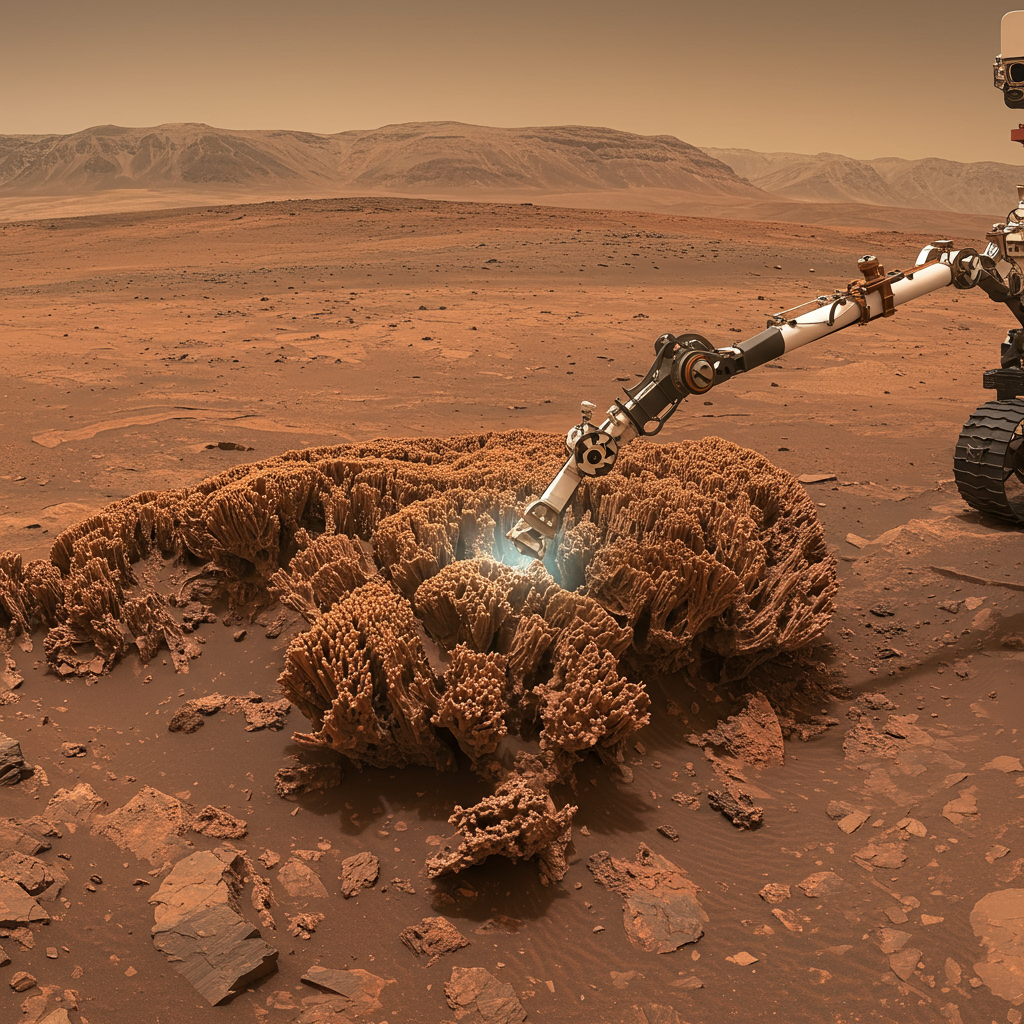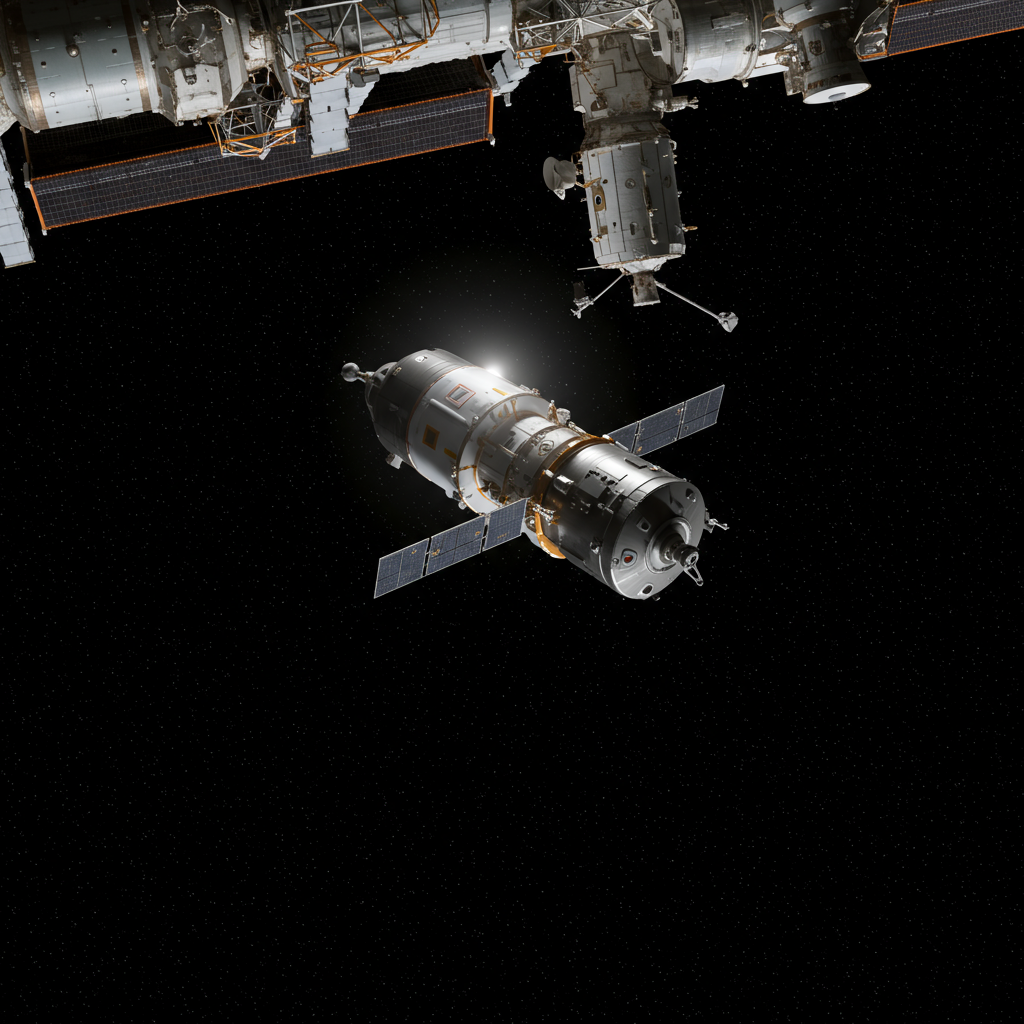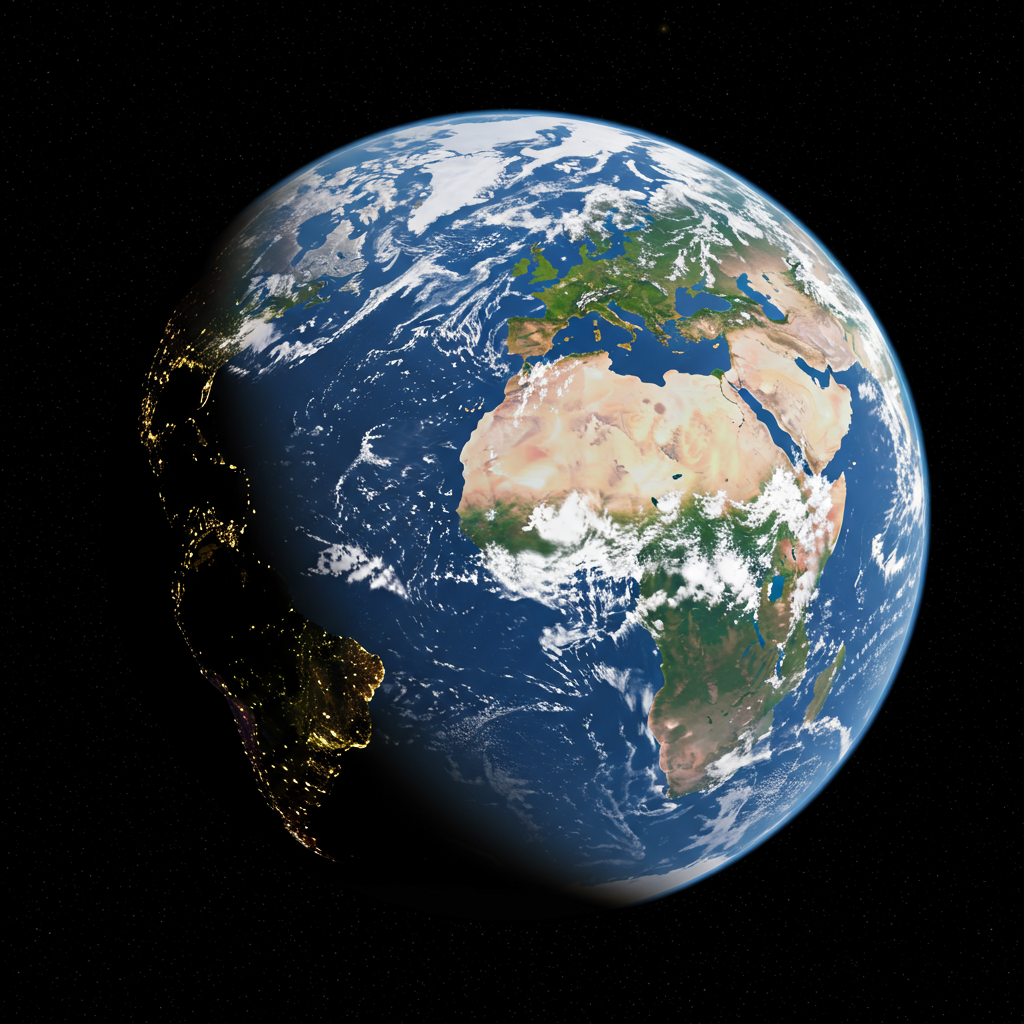The quest to understand Mars’ deep past has taken another captivating turn. NASA’s tenacious Curiosity rover recently unveiled images of a striking object on the Martian surface, bearing an uncanny resemblance to Earth’s delicate, reef-building coral. This intriguing discovery, made deep within Mars’ expansive Gale Crater, provides compelling new clues about the Red Planet’s ancient, watery history and its potential for past habitability. Far from being a biological specimen, this intricate “Mars coral-like rock” is a testament to billions of years of geological evolution, sculpted by the very forces that once made Mars a wetter world.
A Glimpse into Mars’ Ancient Waters
On July 24, 2023, the Curiosity rover, tirelessly exploring the rugged terrain of Gale Crater, captured black-and-white images of this peculiar formation. Released by NASA on August 4, the visuals from Curiosity’s high-resolution Remote Micro Imager showcased an approximately 1-inch (2.5-centimeter) wide, light-colored rock with an astonishingly branched structure. Its appearance immediately evoked comparisons to terrestrial coral, sparking widespread fascination across scientific communities and social media.
However, scientists at NASA’s Jet Propulsion Laboratory (JPL) quickly clarified that this “Martian coral” is a geological formation, not a direct sign of ancient marine life. It’s a prime example of abiotic processes—meaning it formed through mineral precipitation rather than organic activity. The delicate branches are, in fact, hardened mineral veins, resilient remnants of a time when liquid water was abundant on Mars. While not biological, its existence strongly hints at a dynamic environment where water once persisted.
How the “Mars Coral-Like Rock” Was Formed
The formation of this unique rock provides a fascinating window into Martian geology. Billions of years ago, Mars was far from the arid desert we know today. It possessed flowing liquid water, possibly even vast lakes and rivers, much like early Earth. This ancient Martian water was rich in dissolved minerals.
Here’s the geological process believed to have shaped these structures:
Mineral-Rich Percolation: Water, laden with dissolved minerals, seeped into tiny cracks and fissures within the Martian bedrock.
Mineral Deposition: As this water percolated through the rock and eventually evaporated or dried, the dissolved minerals were left behind. These minerals gradually solidified, forming solid, robust “veins” inside the host rock.
Erosion and Revelation: Over millions and even billions of years, powerful, sand-laden Martian winds relentlessly sandblasted the surface. This abrasive wind wore away the softer surrounding rock, leaving the harder, mineralized veins exposed. What we see today as the “Mars coral-like rock” is essentially the intricate, erosion-resistant skeleton of these ancient mineral deposits.
NASA has observed many similar formations within Gale Crater, reinforcing this explanation. These discoveries collectively suggest a dynamic past, where geological processes akin to those on Earth played a significant role in sculpting the Martian landscape. The thin Martian atmosphere has also played a role, helping preserve the delicate fragility of these formations against further erosion.
Curiosity’s Enduring Mission in Gale Crater
Since its successful landing on August 5, 2012, NASA’s Curiosity rover has been meticulously exploring Gale Crater, a massive meteor impact basin spanning 96 miles (154 kilometers) wide. The rover’s core mission, managed by JPL (Jet Propulsion Laboratory) in California, is to assess Mars’ potential for past habitability. This involves scanning the Martian surface for chemical and mineral evidence that conditions once supported microbial life.
Curiosity’s journey through Gale Crater has been slow and deliberate, designed for maximum scientific return. It has traversed roughly 22 miles (35 kilometers) of the crater, stopping frequently to:
Drill into rocks and collect samples.
Analyze soil composition using onboard instruments.
Gather crucial environmental data.
This meticulous approach has consistently yielded compelling evidence. The detection of long carbon chains in 3.7-billion-year-old rocks and signs of an ancient carbon cycle are just a few examples. These findings strongly support the hypothesis that Mars was once a far more dynamic and potentially life-sustaining world. The existence of these mineral veins also suggests the potential for trapping organic molecules, making them prime candidates for future spectroscopic studies.
Beyond the “Coral”: Other Martian Wonders
The “Mars coral-like rock” is just one of many intriguing geological formations Curiosity has encountered. The rover’s keen eyes have spotted other peculiar structures, each telling a piece of Mars’ geological story:
“Paposo”: Discovered on the same day as the coral-like object (July 24, 2023), this strangely shaped rock measures about 2 inches (5 cm) across. Like the coral-like formation, it is believed to be another product of ancient water and wind erosion.
Flower-Shaped Object: In 2022, Curiosity photographed a tiny, intricate flower-shaped object within Gale Crater, another beautiful example of mineral precipitation and erosion.
“Spiderwebs”: More recently, Curiosity also captured images of “spiderweb” patterns—intricate networks of ridges formed by hardened mineral deposits left behind by underground water. These “boxwork formations” stretch for miles on Mount Sharp, indicating that water persisted even as the planet began to dry out.
Pure Sulfur Crystals: A notable discovery from 2024 (as per some reports) was pure sulfur crystals, pointing to ancient volcanic or hydrothermal activity, which could have created additional habitable niches.
These varied discoveries paint a consistent picture of a once-wet Mars, shaped by pervasive water activity and subsequent erosion. They highlight the planet’s fascinating geological history and its transition from a dynamic, aqueous world to its current cold desert state.
Enduring Challenges, Sustained Discovery
Now in its 13th year of operation, Curiosity continues to be a marvel of resilient engineering. Despite wear on its wheels and the natural degradation of its multi-mission radioisotope thermoelectric generator (MMRTG), which converts heat from decaying plutonium into electricity, NASA engineers have implemented innovative solutions to maximize its scientific output.
Energy Conservation: New software upgrades allow Curiosity enhanced autonomy, enabling it to multitask and enter an early sleep mode after completing daily tasks. This conserves crucial energy from its aging power source, akin to a “teenage rover maturing.”
Operational Efficiency: Previously standalone tasks like driving, photography, and data transmission are now combined into more integrated sequences, reducing the duration that heaters and other instruments need to remain powered on.
These clever workarounds allow Curiosity to continue its ascent of Mount Sharp, incrementally refining our understanding of Mars. Each new image and data point strengthens the narrative of Mars’ transition from a potentially vibrant, aqueous world to its current barren state. These insights are critical not only for fundamental science but also for informing future human missions by emphasizing the planet’s water resource potential and past environmental conditions. The ongoing success of Curiosity exemplifies resilient engineering, bolstering the rationale for advanced sample-return missions that aim to bring Martian materials back to Earth for comprehensive analysis.
Frequently Asked Questions
What is the “coral-like” rock found on Mars, and how did it form?
The “coral-like” rock discovered by NASA’s Curiosity rover on Mars is a small, light-colored geological formation, approximately 1 inch (2.5 cm) wide, with intricate branches resembling Earth’s coral. It formed billions of years ago when Mars had liquid water. Mineral-rich water seeped into cracks in rocks, depositing minerals that later hardened into veins. Over eons, Martian winds, laden with sand, eroded the softer surrounding rock, leaving behind these resilient, branched mineral structures. It is not biological but a product of ancient Martian geological processes.
What is the primary mission of NASA’s Curiosity rover, and where does it operate?
NASA’s Curiosity rover’s primary mission is to investigate the Martian surface for evidence that it was once habitable. Since its landing in August 2012, it has been exploring Gale Crater, a 96-mile-wide (154 km) meteor impact basin on Mars. The rover’s extensive journey involves drilling into rocks, collecting samples, and gathering data to find chemical and mineral clues about Mars’ potential for past life, including signs of ancient water and organic molecules. Its findings help refine models of Mars’ evolution.
How does the discovery of the “coral-like” rock contribute to the search for life on Mars?
The “coral-like” rock provides compelling evidence of long-lasting liquid water on ancient Mars. Water is essential for life as we know it, and formations like these indicate a past environment where water was abundant and capable of transporting minerals, potentially creating conditions suitable for microbial life. While the rock itself is not a direct sign of ancient life, its existence strengthens the hypothesis that Mars was once a far more habitable world. This discovery guides scientists in their ongoing search for biosignatures, focusing future studies on areas that once hosted significant water activity.
Conclusion
The latest discovery from NASA’s Curiosity rover—the striking “Mars coral-like rock”—serves as a powerful reminder of the Red Planet’s dynamic and watery past. While not a direct sign of ancient life, this intricate geological formation offers invaluable insights into the conditions that once prevailed on Mars, bolstering the evidence that it could have harbored life billions of years ago. As Curiosity continues its remarkable mission, bravely battling the Martian elements and the passage of time, each new find incrementally stitches together a more complete picture of our neighboring planet, deepening our understanding and fueling the enduring human ambition to explore beyond our home world.




